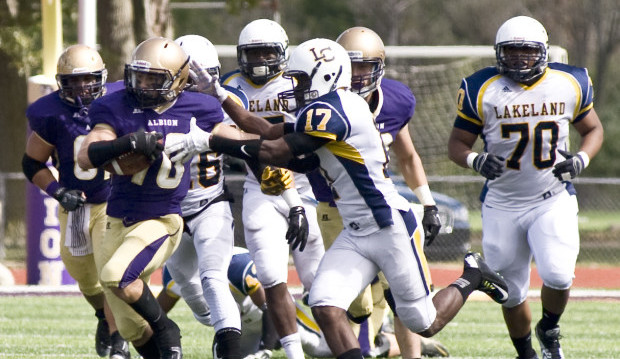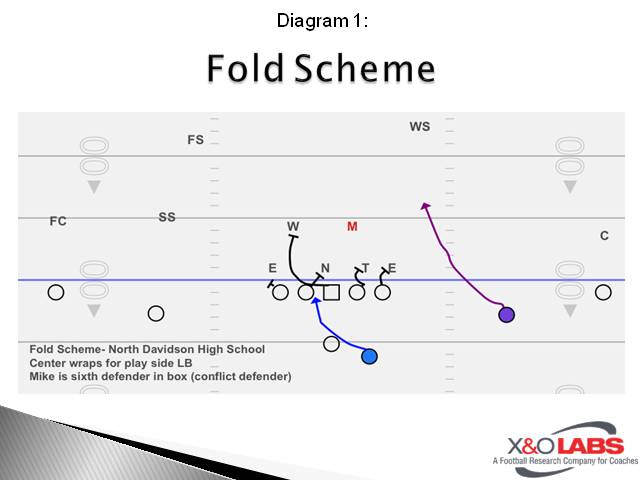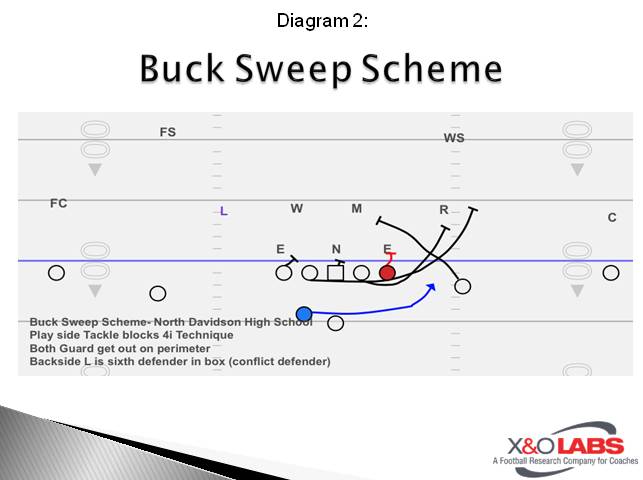By Mike Kuchar
Senior Research Manager
X&O Labs
Twitter: @MikekKuchar
Introduction
 Quick question to all those RPO coaches: Are you designing these run/pass options in order to run the ball more effectively or just to throw it around the lot?
Quick question to all those RPO coaches: Are you designing these run/pass options in order to run the ball more effectively or just to throw it around the lot?
The answer seems obvious, right: to outnumber the defense in order to run the football.
Well, we thought so too until we started conducting our research on this study. The philosophy that began as a way to control a plus-one defender by tagging a pass element to your run game, may have shifted to the priority of getting your best receiver the ball in space though the air. Of course, there is nothing wrong with that philosophy. In fact, many of the coaches we spoke with are successful perhaps because they’ve figured out alone just how to do that.
We did provide over a dozen contributors to this study from all levels of football, including several who used a post-snap read on over 75 percent of their offensive snaps this season. While a contingent of these coaches use their RPO concept to take advantage of defenders who are tied into the run game, there are others like Fordham University head coach Andrew Breiner who thinks the opposite. As Coach Breiner told us, “People are thinking how can I call a run and throw the football. That’s not our intention. Our intention is to call the run to run the ball, but now allow defenses to add the extra defender in the box.”
In this case, we wanted to provide coaches with the necessary means to design these RPO concepts. In doing so, we are going to take the following philosophy in mind, we will report on how coaches are constructing these schemes by placing defenders in conflict in order to run the ball more effectively.
Many of our sources were among the top rushing programs in the country this past season, Albion College (MI) rushed for 283 yards per game and Arkansas Tech University rushed for 269 just to name a few. We dug into how these coaches, and others, we using the RPO system to put defenders in pre-snap conflict and manipulate their assignment post-snap. The run games they were using to do so were based on three components:
- Front Structure
- Box Count
- Field and Boundary Fitters
The bottom line is to find out who a defenses extra run fitter is and manipulate that defender using various means.
Designing Runs off Front Structure
Some runs work particularly well against different fronts. We all know this as coaches. But there are some coaches who put a premium on which run concept they are calling based off the front that they are seeing. We’ve found that in general terms, coordinators who plan against even front structures are more susceptible to call gap scheme run concepts, particularly against play side 3-techniques in order to get movement at the point of attack. These are also the same coaches who will choose to run zone concepts at the bubble (or shade/5-technique) side so their front side guard can climb to the next level. Alternatively, coaches that are designing their RPOs against predominantly even front teams have chosen to use some double pull concepts, mainly in the form of buck sweep and other pin and pull variations, because of the probability of getting two linemen out at the point of attack.
Eric Davis at Mankato East High School (MN) told us his power and counter gap schemes were less efficient vs. 3-4 teams, partially due to our inability to block the outside linebacker when our kick out player blocked the 4-techhnique or 5-technique. “We also had some struggles getting to the backside linebacker with our backside guard on inside zone vs. 3-4 teams. So we’re hoping that an expansion of our RPO package will fix that problem. We did run our buck sweep very effectively against those teams as well as power out of tackle over. While inside zone was not great against the 3-4, it was extremely effective against the 3-3 Stack, probably due to the fact the gaps the defenders were responsible for were more clearly defined immediately post-snap.”
Mark Holcomb at North Davidson High School (NC) will break the run concepts from his RPO package into attacking front structure as well. Against four man fronts, Coach Holcomb will use his fold scheme, where he will block down on the nose and wrap the center or the uncovered lineman for the play side linebacker (Diagram 1). It’s a way for him to block the sixth man in the box. Against three-down looks, the gap blocking structure of the buck sweep helps even against 4i-techniques because he will use his tackle on that player in order to have two puller with the guards (Diagram 2).


Joe Osovet, the former head coach at Nassau Community College (NY), will check the portions of his RPOs to the shade techniques in four-down fronts. Although his run portions are not married to his RPOs at all, he told us he will run the best run concept that we will think is best against the front we are going to face. Then he tags his RPO concepts to what we think the back end of coverage is going to look like. “If we had our druthers, we want to gap things,” said Coach Osovet. “We want to run our inside zone to the low shade, our G/T counter to the high and our dart scheme is predicated on where the bubble is or the second level linebacker alignment is.”








